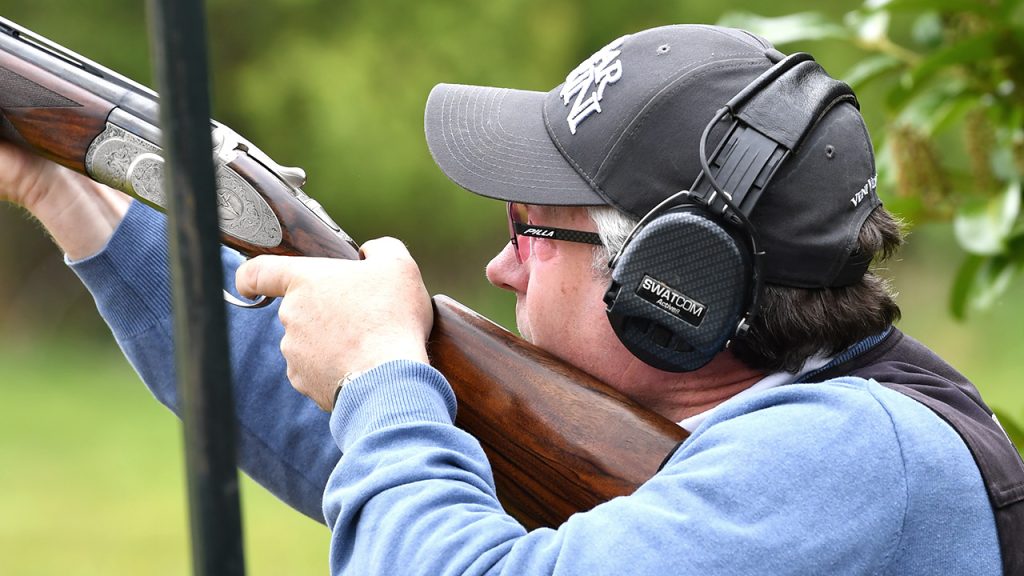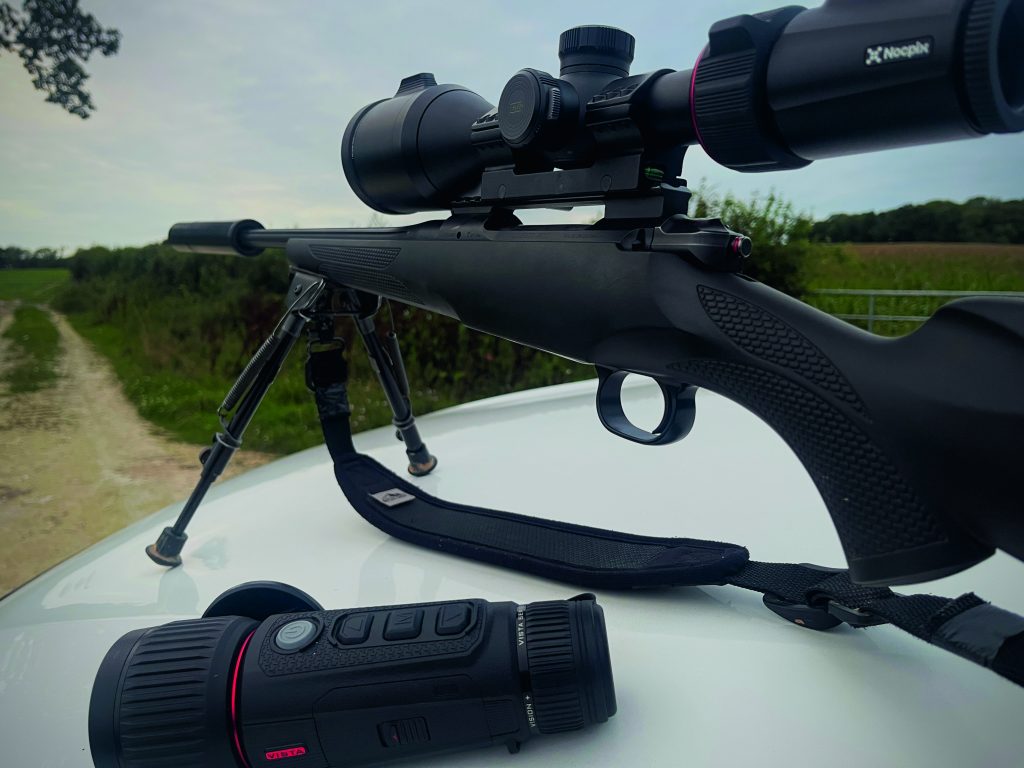Thermal scope review: New HIK MICRO Thunder 2.0 TQ50
Paul Austin gets behind a rifle for a close inspection of the latest release from HIK MICRO: the new, ultra-low NETD Thunder 2 thermal rifle scope
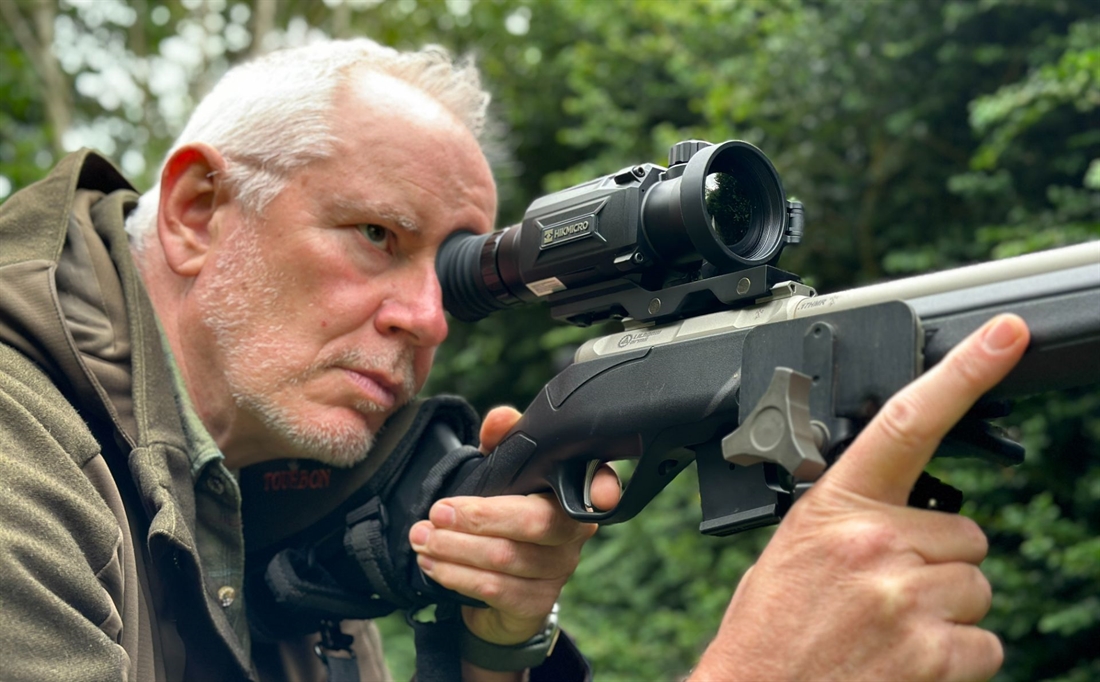
The Thunder 1 was a real success for HikMicro, following in their tradition of producing good quality thermal at sensible prices. It’s a model that’s worked well in the past and one they’re clearly hoping to maintain with its successor.
It must be said that HikMicro have wisely taken note of their target audience and reimagined the Thunder 2 as a more focused product. The original Thunder 1 attempted to be all things to all men, with a myriad of options that no doubt appealed from a marketing perspective, but which didn’t necessarily work that well for shooters on the ground.
The Thunder 1 Pro was a spotter, a scope, and a front-mounted thermal all rolled into one. Although a strong seller, that’s not really what the market wanted. A day hunter may only need a thermal scope on occasion, perhaps for a spot of fox or pest control, which made the front mounting option appealing. Similarly, a dedicated night hunter could opt for a permanent sled-mounted thermal scope. However, neither of these two groups were likely to pull the thermal from their rifle and transform it into a spotter, at least not on a regular basis.
Very few riflemen are keen on removing a scope they’ve painstakingly zeroed it, in fear that said zero would be off the mark once returned to the rifle. This isn’t the kind of thing you’d want to do in the field anyway. In short, this multi-mode approach was a nice idea but not a particularly practical solution.
HikMicro have listened and have taken those lessons on board. The new Thunder 2 wisely doesn’t try to be all thing to all men but focuses much more on its core abilities, as either a dedicated scope or a front-mounted thermal, so much so that there is a dedicated model for each task and the two can no longer be interchanged, which in my opinion is a good thing.
Obviously, there’s no reason you couldn’t remove the sled and use the device as a spotter if you wished to, but HikMicro now appreciates this type of usage is the exception rather than the rule for most hunters.
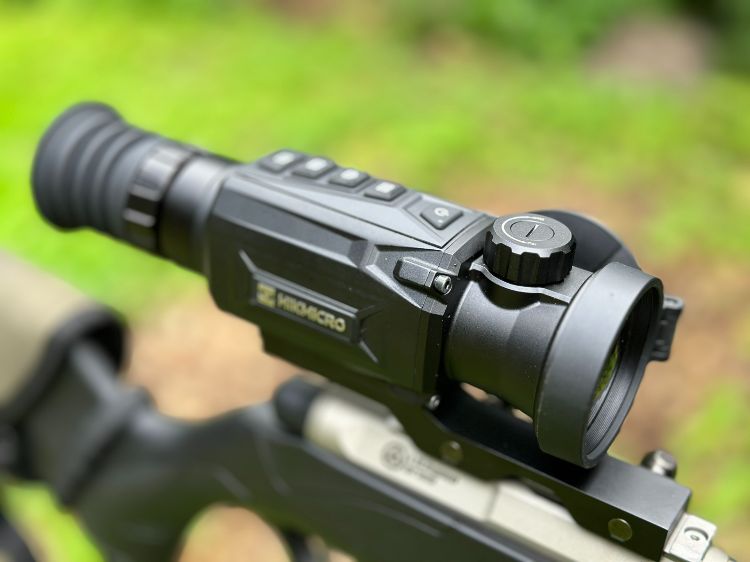
HIK MICRO Thunder 2 upgrades
So, a more focused product, but what else has changed to differentiate version 1 from version 2? The most notable change straight out of the box is the focus dial. This has migrated from its original location as a typical barrel-mounted focus to its new top-mounted location.
It’s a good move, placing focus adjacently alongside the other top-mounted controls, allowing you to quickly adjust zoom, photo and video triggering (with audio), adjust colour modes, and activate the quick menu and main menu more efficiently.
The device itself is very similar in terms of dimensions and weight, but the four key buttons plus the power/standby have been arrayed in a line rather than the compass-style layout of its predecessor. In terms of functionality, it’s all there with recoil activate video, picture in picture, multiple rifle profiles, lots of reticle options with FFP (first focal plane) style zooming, connection via wifi to the HikMicro app. In short, everything you’d expect from a modern 640 thermal.
On the left side of the device, there’s a more subtle but much appreciated upgrade with the addition of a new custom battery that delivers 6.5 hours of runtime, stretching to up to 10 hours with a little care and use of the standby mode. Its predecessor employed CR123A batteries, which aren’t an overly popular battery choice for most users. The new device ships with two battery packs as standard plus a charging module, but the battery can also be recharged internally. All in all, a nice upgrade that offers a major improvement over CR123A’s.
 HIK MICRO Thunder 2 improved NETD
HIK MICRO Thunder 2 improved NETD
Aside from the physical changes of the relocated focus dial and improved battery, the really big news is the hugely improved NETD. The original Thunder provided a sub 35 NETD, which at the time was impressive performance. This has now been dramatically improved with the arrival of the new sub 20 NETD sensor.
This is the first sub 20 NETD sensor I’ve seen on any thermal scope, trumping Pulsar’s sub 25 NETD on the upgraded Thermion range. The only other thermal product I’ve seen with a lower NETD is Pulsar’s new Telios LRF XP50 spotter which boasts a sub 18 NETD.
So, what does a lower NETD bring to the party? Essentially texture, to both your target and the environment they’re in. It doesn’t add any resolution; a 640 sensor provides a finite number of pixels, but what it does do is provide visibly finer increments within the thermal spectrum.
As a result, more subtle details are revealed within the picture. For example, let’s say you’re observing a deer or a fox, with a higher NETD the animal may appear as more of a blob or a solid mass. The outside/outline of the animal would remain the same, but with a lower NETD, you start to see more thermal variation across the body, which might take the form of visible fur, or perhaps more contrast between colouration on the animal itself, alongside a more three-dimensional look overall.
The same applies to the environment, which again appears more detailed or three-dimensional because of the effect of a lower NETD. This can obviously help when it comes to identifying obstacles or perhaps assessing the suitability of the backstop. The more information you have, the better the decisions you can make in terms of shot selection.
 Conclusion
Conclusion
All-in-all, I’m impressed with the Thunder 2. It has abandoned its ‘do-it-all’ approach and adopted a much more focused approach. Combine that with the improved ergonomics and better battery life, and you have a much more targeted product overall.
Obviously, the big news is the much-improved NETD, which at the moment makes it class-leading in that respect. Some people may prefer the traditional 30mm ring-based approach of its competitors, but in terms of performance in the field, there’s no complaints. A great upgrade to what is already a very successful product from HikMicro.
Supplier: Elite Optical
Price: £2,899.99
Product introduction
- TECH SPECS
-
Sensor: 640 x 512px @ 12µm
Objective Lens: 50 mm / F1.0
Resolution, pixels: 640 x 512 px
Pixel pitch, µm: 12µm
Frame rate, Hz: 50 Hz
NETD: <20mK
Objective lens: F1.0
Focal Length: 50mm
Magnification (Optical): 2.6x
Magnification (Digital): 1x, 2x, 4x, 8x
Min Focusing distance: 10m
Field of view: 8.78° × 7.03°
Type: 9.9mm OLED
Display resolution, Pixels: 1024 × 768
Eye Relief: 45mm
Colour Palettes: Black Hot, White Hot, Red Hot, Fusion
Picture-in-Picture: Yes
Video & picture recording: Yes
Build in memory, Gb: 16 Gb
Hot Tracking: YES
WiFI hot spot: YES
Recoil activated recording: YES
Audio recording: YES
HIKMICRO Connect App support: YES
Operating temperature range: -30 °C to 55 °C
Dimensions, mm: 230 mm × 73 mm × 68 mm
Weight, kg: 0.53 kg - POWER SUPPLY
-
Operating time on battery (WiFi & Hot tracking disabled): 6.5 Hours continuous running
Charging interface: External Charger
Battery type: Removable & rechargable Li-ion battery pack
Related Articles
Get the latest news delivered direct to your door
Subscribe to Rifle Shooter
Elevate your shooting experience with a subscription to Rifle Shooter magazine, the UK’s premier publication for dedicated rifle enthusiasts.
Whether you’re a seasoned shot or new to the sport, Rifle Shooter delivers expert insights, in-depth gear reviews and invaluable techniques to enhance your skills. Each bi-monthly issue brings you the latest in deer stalking, foxing, long-range shooting, and international hunting adventures, all crafted by leading experts from Britain and around the world.
By subscribing, you’ll not only save on the retail price but also gain exclusive access to £2 million Public Liability Insurance, covering recreational and professional use of shotguns, rifles, and airguns.
Don’t miss out on the opportunity to join a community of passionate shooters and stay at the forefront of rifle technology and technique.



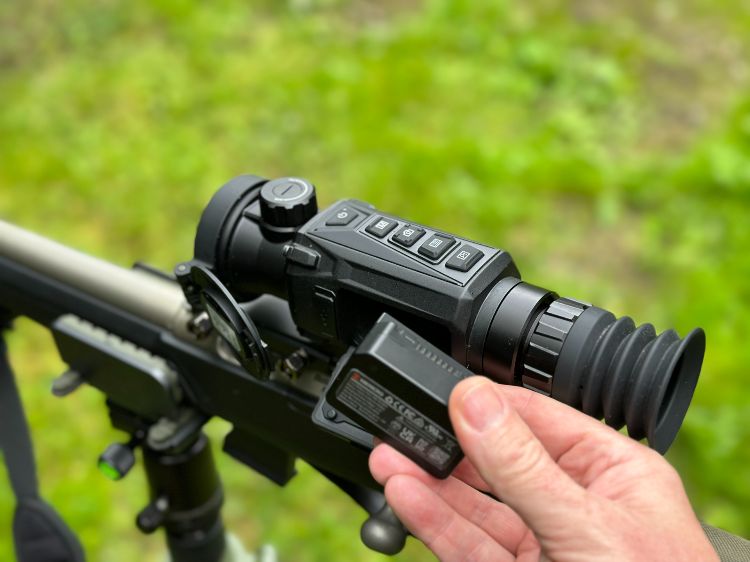 HIK MICRO Thunder 2 improved NETD
HIK MICRO Thunder 2 improved NETD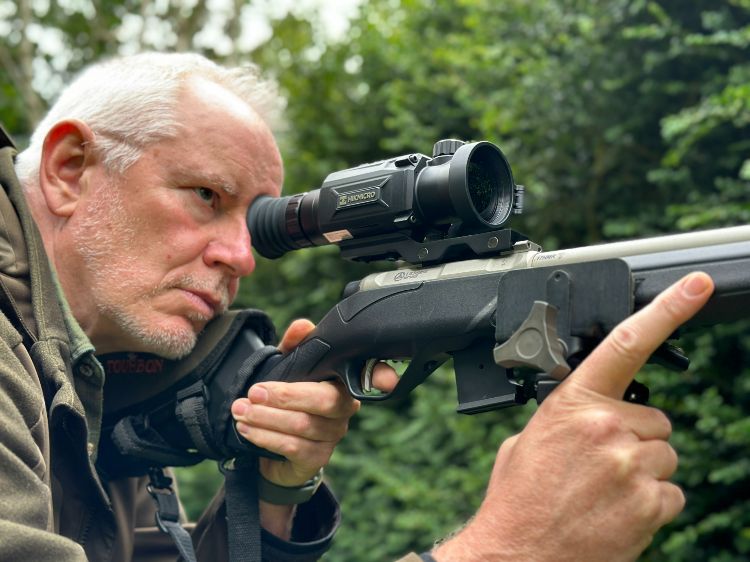 Conclusion
Conclusion